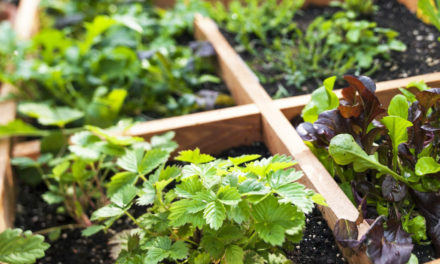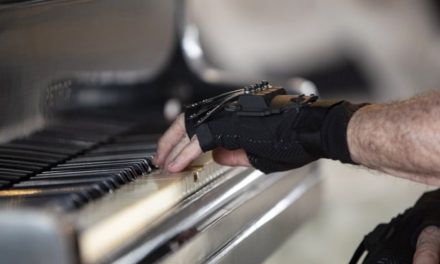By ROBIN MILLER
NEW ORLEANS (AP) – For Matt Beeson, it all began with the question: “I wonder what would happen if I tried this?”
So he tried it, and now his game-changing Swamp Dragon hot sauce is infiltrating grocery store shelves near and far.
“It started with an idea, I guess as all things do,” Beeson said. “It was maybe about five years ago. I wasn’t looking to start a company, but I do like spicy food.”
And he didn’t like what he was tasting in most commercial hot sauces.
 “Vinegar is the preservative used in hot sauces, but it’s so overpowering that you can’t taste the peppers,” Beeson explained. “So, I looked at what was on my countertop, and I realized that vodka is an unflavored spirit. Why wouldn’t that work?”
“Vinegar is the preservative used in hot sauces, but it’s so overpowering that you can’t taste the peppers,” Beeson explained. “So, I looked at what was on my countertop, and I realized that vodka is an unflavored spirit. Why wouldn’t that work?”
It did. And as Beeson experimented, he discovered that other spirits also worked, adding their own unique flavor while preserving the sauce.
Swamp Dragon now can be found on local grocers’ shelves and is being distributed to stores in the Midwest and Northeast. It also can be ordered at swampdragonhotsauce.com.
The name pays homage to Beeson’s upbringing and his love of fantasy fiction and sci-fi. He also drew the product’s mascot, a dragon named Marvin, and he’s constantly in search of investment capital.
“The sauce is hot, but it’s delicious,” he said. “Ideally, the foodies and chefs in the world should see this and want to get creative with things that would never have occurred to them before. You can eat it on almost anything.”
Along with vodka, the main spirits used to fuel Swamp Dragon’s flavors are rum, tequila, ouzo and bourbon. All are packaged by hand in plastic bottles in Beeson’s new digs on Balis Drive, a space the company moved to in February to allow for more production.
Right now, he’s producing 60,000, 5-ounce bottles a year, but the new workspace will change that, giving him room to store 600,000 bottles.
The New Orleans native says he is a fan of spicy food, particularly boiled crawfish – when it’s done right.
“And when it’s done wrong, it’s not spicy enough,” he said. “So, you get an idea of the kind of heat eater I am. I am not a competitive heat eater. I’m not one of those guys who goes on TV and shows off in front of everybody.”
But he trusts his taste buds to know when the heat in a dish is right. And, as he grew older, Beeson said he became dissatisfied with what he was tasting.
“It was the whole vinegar thing,” he said. “I was looking at labels of every hot sauce bottle I could get my hands on, and they all incorporate vinegar. They’re very upfront, by the way, because it’s the main ingredient, and I intuited that that’s the reason you don’t have to refrigerate the hot sauce.”
Vinegar is part acetic acid, which acts as a preservative, killing mold and bacteria.
“But I was like, ‘You can’t taste the peppers, you just get vinegar and heat,’” Beeson said. “And peppers have flavor to them.”
That’s when he grabbed the vodka, reasoning it is an unflavored spirit.
“And it kills germs,” Beeson said. “I said, ‘Maybe it would work, and maybe you would be able to taste the peppers at the same time.’ “
Beeson tested his theory in his kitchen, proving to himself it was viable. He could taste the peppers, and the 20% alcohol preserved them.
“We actually have a superior preserved product,” he said. “And it does it in a pH-neutral sort of way. So, we’re not adding acid to the product. And it will last forever. And the alcohol actually protects the color of the sauce, so it doesn’t turn brown when it sits on the shelf.”
Beeson’s wife, Baton Rouge attorney Cassie Felder, suggested he bring his idea to the LSU AgCenter’s Food Incubator, which specializes in helping develop food ventures. There, he worked three years with food scientist-plant manager Marvin Moncada in testing, then producing the hot sauce.
“He said it would work, and I knew I’d better start a company because this is going to be a very unique product,” Beeson said. “That said, I would have sold it in the liquor aisle and required IDs to do it as adult hot sauce, if you will. I would have done that if I had been required to.”
But Swamp Dragon didn’t qualify as an alcoholic beverage.
“It turns out there are two pieces at work here: The fact that the alcohol is the preservative in the process, which means that it’s not an adulterated food,” Beeson said. “And, it’s too spicy to be a beverage. So the federal government determined it’s a food product, so even at 20% alcohol, we can sell it to minors. We don’t have restrictions. Lord knows, I wouldn’t try to drink it.”
Beeson said he never aspired to start a business. His dream – he was a drummer during his college days at LSU from 1987 to 1989 – was to become a rock star.
The music business didn’t pan out, and he earned an English degree at LSU in 2004. Beeson eventually became systems manager and director for an audio-visual company in Texas, where his wife practiced law.
The couple decided to move back to Baton Rouge, where Beeson worked as director of operations and bookkeeper for his wife’s law firm. She told him he should go all-in on the company.
Beeson worked with Moncada’s students to test different alcohol percentages for the sauce. Then he decided to experiment in his kitchen.
“I said, ‘To heck with the rules, the percentages, the pipettes, the gram scales and all of that stuff in the lab, let’s just mix this up at home and see where we get to,’” Beeson said. “I mixed different peppers together, and we ended up with a secret blend of different premium peppers. Actually, the alcohol kicks the heat down a little bit. So, to get the heat profile we were looking for, we blended different peppers, and it has a very unique flavor to it.”
Beeson won’t reveal his recipe, which he uses for all of his sauces. He buys them from a distributor in Tennessee.
“I mixed them in tiny bowls,” he said. “I applied for a patent on this.”
With the alcohol acting as a preservative, Beeson thinks he’s in for a long run.
“And I’m beginning to think – I can’t prove it yet – but my shelf life is going to be about like port wine, which is also 20% alcohol,” Beeson said. “Maybe about 50 years from now, we can see what one of my bottles taste like.”








